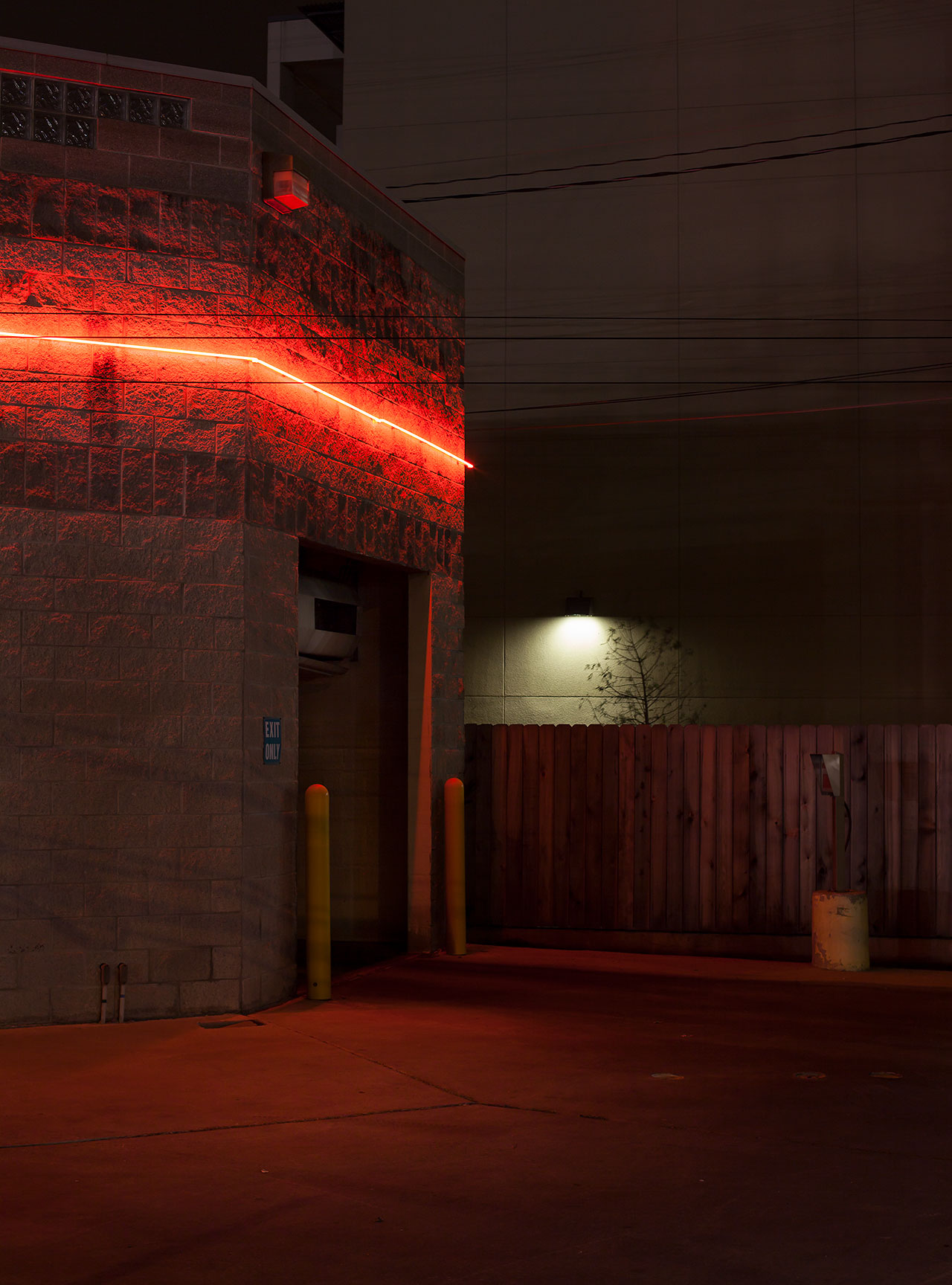
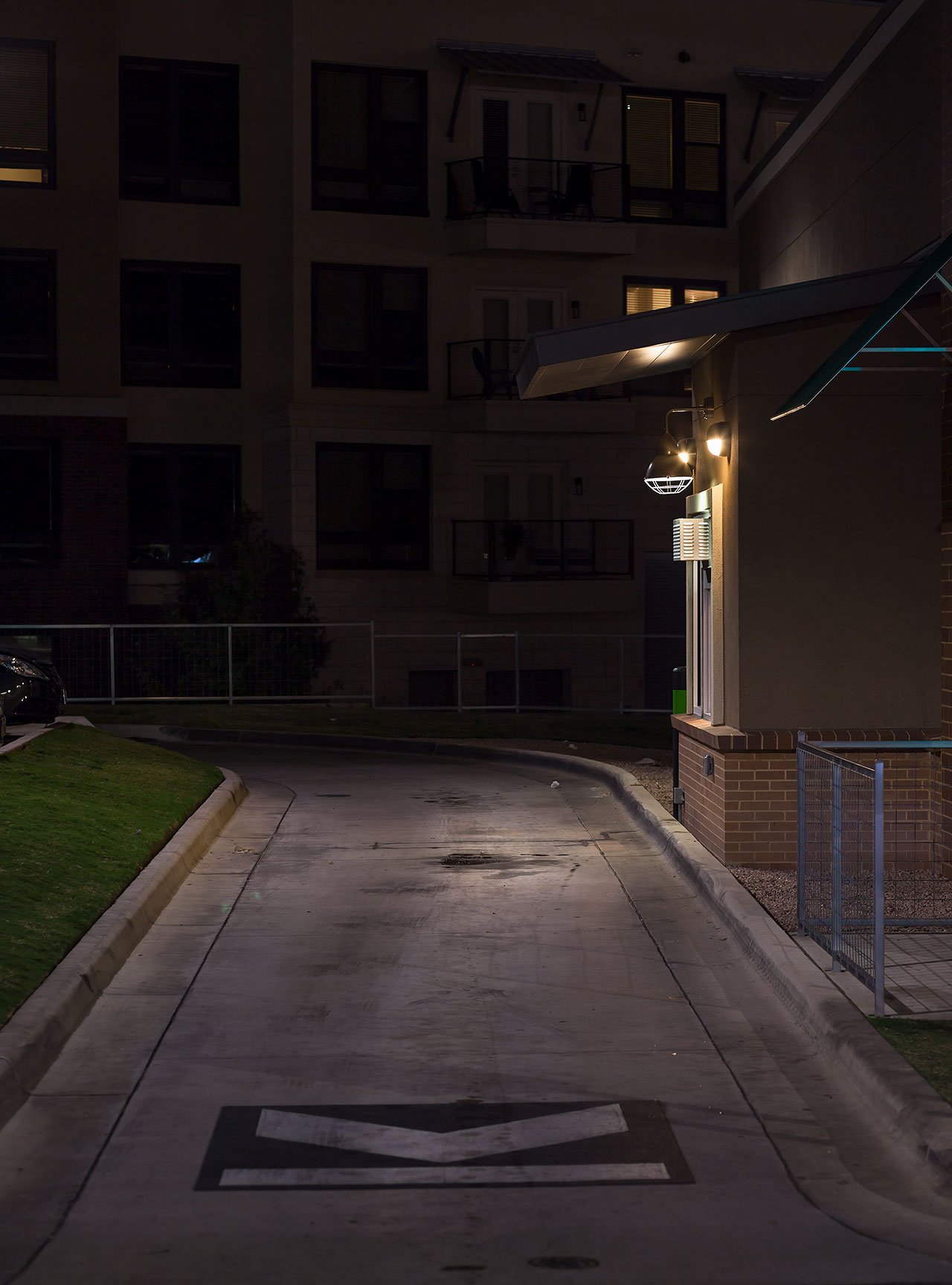
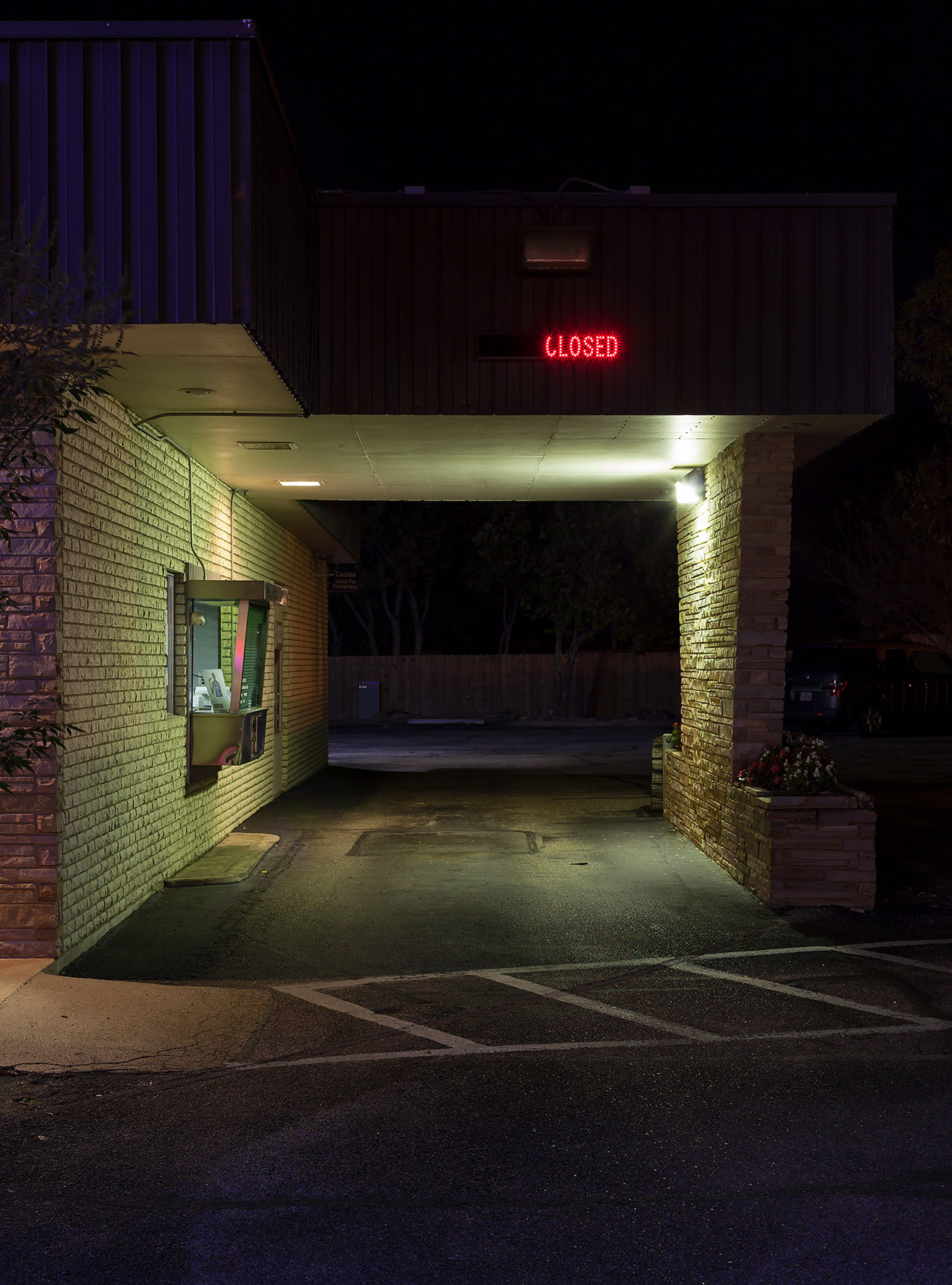
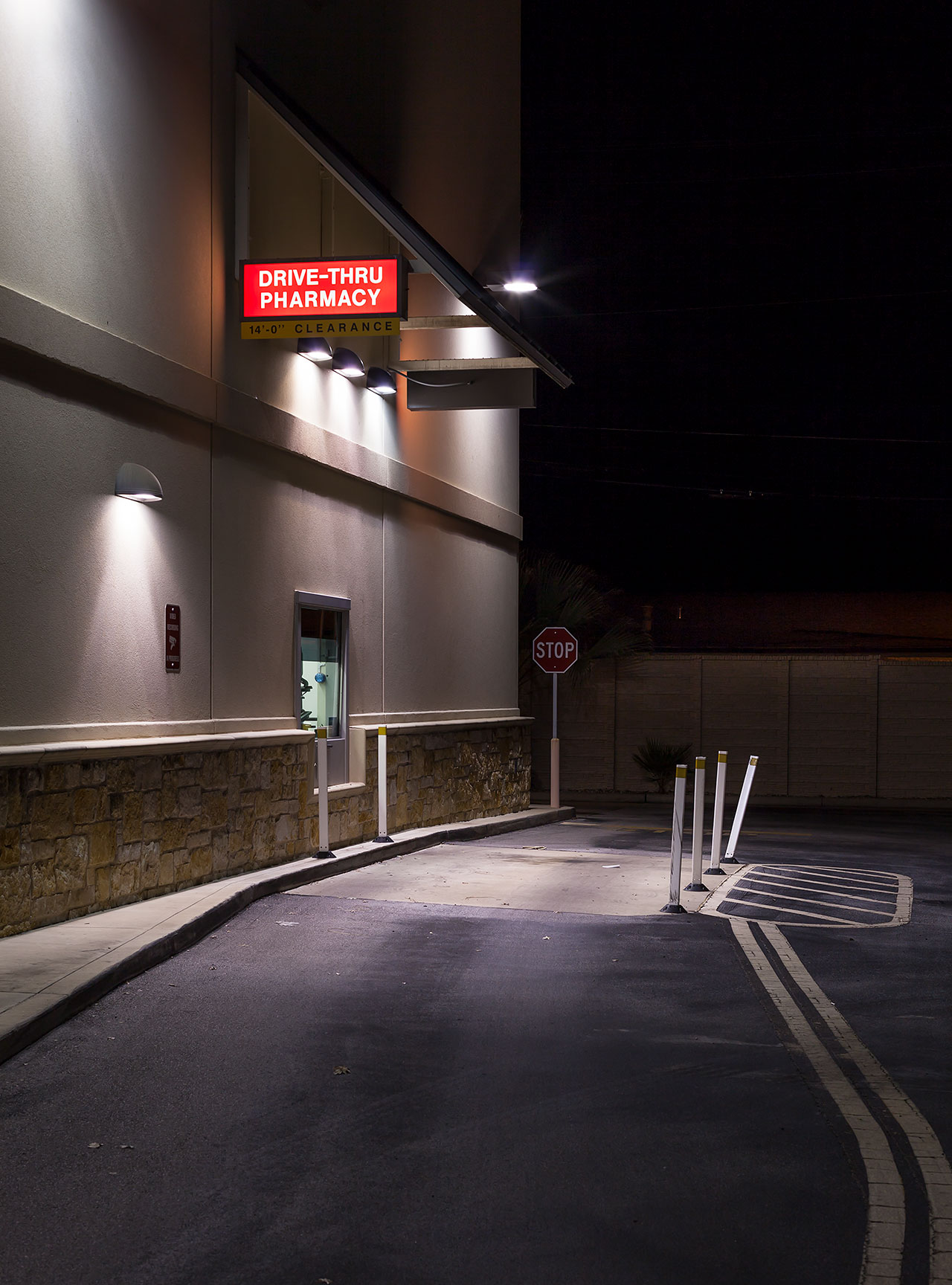
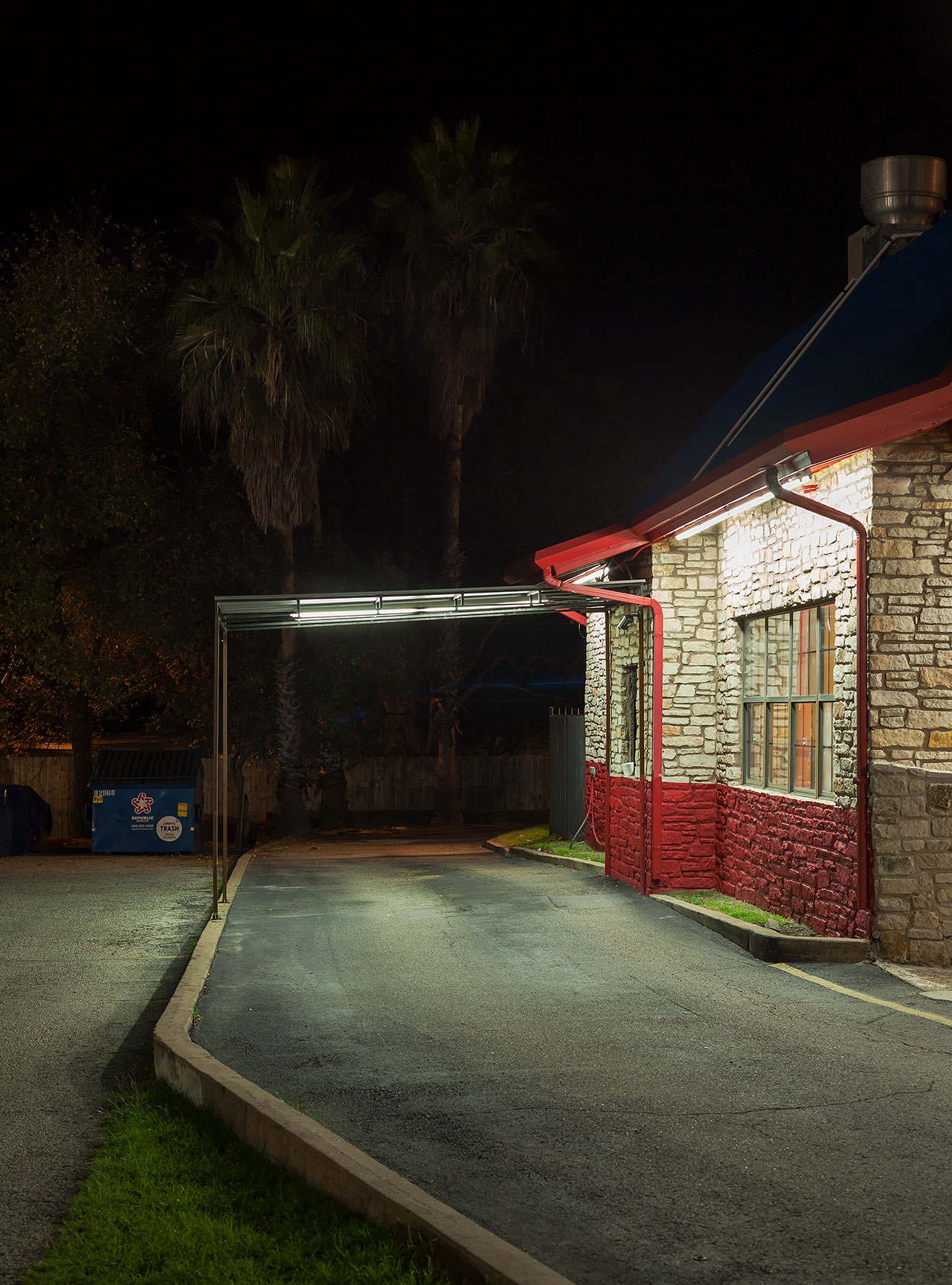
Concept
In the USA, drive-thrus are a widespread part of shopping and service culture.
They are found not only in fast food restaurants, but also in banks, drugstores, coffee shops and even as US Mail counters.
At night, in artificial light, these service counters look like stages or the screen sets of film productions.
For me, they represent many of the things that define the character of the USA – superficiality, consumption, automobile culture.
But, at the same time, express the beauty of a self-dramatization that is hard to grasp.
They are reminiscent of scenes from the movies, paintings and books. This lends them a magnetism that is almost irresistible and equally as ambivalent as the United States themselves.
Vita
Born 1973, in a small town in North-Rhine Westphalia, Germany.
Grew up in an even smaller village in the same German state.
High school graduation 1993, then studied dramatic arts in Leipzig. Unsuccessfully.
Worked from 1998-2012 as a cinema projectionist and head of projection in Bielefeld.
Next attempt: Studied ‘photography and media’ at the University of Applied Sciences in Bielefeld from 2010. Successful graduation as a Bachelor of Arts in 2016.
Exhibitions:
2016
- ‘Still looking for Bret’, University of Applied Sciences in Bielefeld
- Students photo books at the Lumix Festival, Hanover
- Photoszene-Festival, Galerie 68elf, Cologne
- Organ Vida (finalist), International Photography Festival Zagreb, Croatia
2015
- ‘Les Boutographies’, official selection of the jury in Montpellier, France
- ‘Dialog’, Galerie Holthoff-Mokross (Triennale of Photography), Hamburg
- ‘Turn down the Lights’, Bunker Ulmenwall, Bielefeld
2013
- ‘SiFest 2013’ photo festival – Savignano Immagini’, Savignano sul Rubicone, Italy
2012
- ‘Wanted! Bielefeld’, Bunker Ulmenwall, Bielefeld
- ‘Budapest’, University of Applied Sciences in Bielefeld
Jury Statement
Mario Brand’s mysterious night shots of US-American drive-thru counters of banks, fast food restaurants or drugstores strike a fascinating balance between the banalities of everyday life and scenes reminiscent of movie sets. From a German point of view, Brand’s eye for the absurd realities of American consumer culture may well appear critical. Nevertheless, the dramaturgy reminiscent of the paintings of Edward Hopper found in his pictures adds a further chapter to the mythology of the American way of life. In Brand’s own words, this beauty is as at least as ambivalent as the United States themselves. Here, the compositions show formal perfection in every respect – not least in the photographer’s management of light. The graphic, precise and differentiated visual language of his night shots strips the commonplace aspects from these places and simultaneously transforms them into scenes reminiscent of movie sets. The photographs of this portfolio are aesthetic masterpieces that work both singly and as a series.

